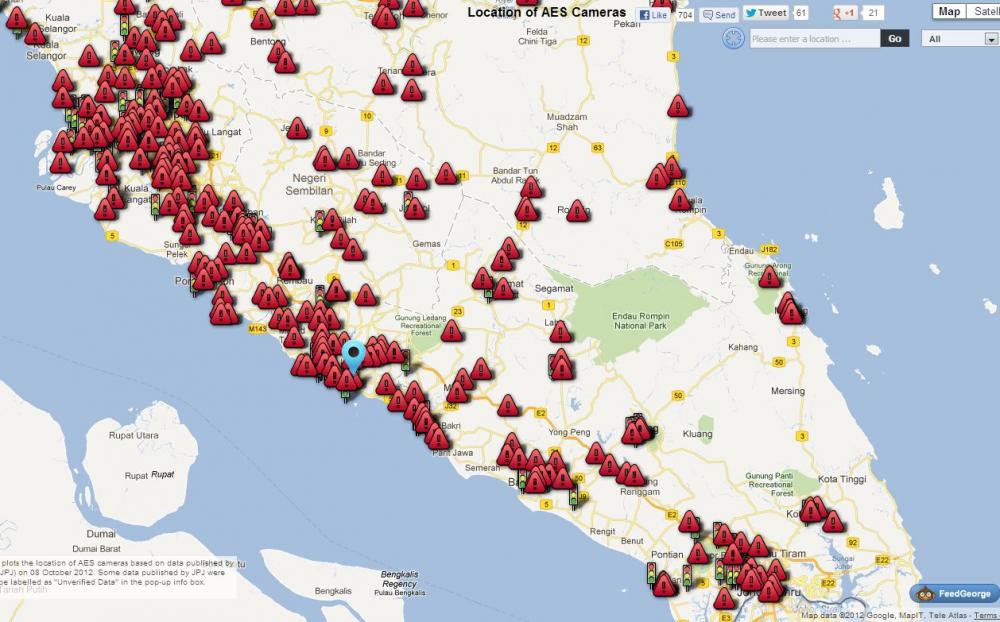How the police won the RM6 billion turf war against RTD

AES locations
One thing is for sure – with the police at the helm, more motorists will tend to pay the fines because they may not be able to renew their road tax if they don’t. But all it takes is one person to challenge the AES images in court for its implementation to be on tenterhooks again.
M Shanmugam, managing editor of The Edge, fz.com
THE Road Transport Department (RTD) lost its battle to implement the controversial Automated Enforcement System (AES) on Dec 18 last year when the Attorney-General’s Chambers decided to suspend prosecution of traffic offenders caught under the system.
It didn’t happen last week, when acting Transport Minister Datuk Seri Hishammuddin Hussein announced that the police, instead of the RTD, would be the primary agency responsible for issuing summonses to traffic offenders caught under the AES.
The writing had been on the wall some six months earlier that the job would go to the police.
The incentive to implement the project is huge.
To give an idea, the amount of unpaid traffic summonses between 2000 and 2009 amounted to almost RM6 billion. The agency that can recover this amount has bragging rights and seek a bigger budget.
With the police at the helm, the fine has been slashed by 50% to RM150, instead of RM300. But that amount will be increased if offenders take a longer time to pay up. So, at the end of the day, the fines could still be as high as RM300.
The other significant shift is that private companies will no longer get a share of the fines paid by traffic offenders. This was the grouse under the previous system as the general public felt that the entire proceeds should go to the government.
However, this critical flaw, which came about due to the AES’ revenue-sharing model, could have been easily rectified.
Under the revenue-sharing model, the two companies get a share of the proceeds from the traffic summonses that are settled, based on a formula whereby the amount decreases as the fines build up. The internal rate of return is capped at 17%.
In return, the two companies – Beta Tegap Sdn Bhd and ATES Sdn Bhd – have to supply and maintain the entire IT backbone, cameras, systems and other facilities for the RTD to nab speeding motorists.
It was essentially a supply contract that could have been modified because the two companies were looking for an amicable settlement after all the public hue and cry.
Instead, the government decided to buy out the two companies.
This raises the question of whether enforcement carried out by the police, instead of the RTD, will resolve all issues in relation to the AES.
Does this mean that traffic offenders caught by the cameras will be prosecuted if they refuse to pay the fines? What has changed that will allow prosecution now compared with some nine months ago?
Read more at: http://www.fz.com/content/how-police-won-rm6-billion-turf-war-against-rtd

